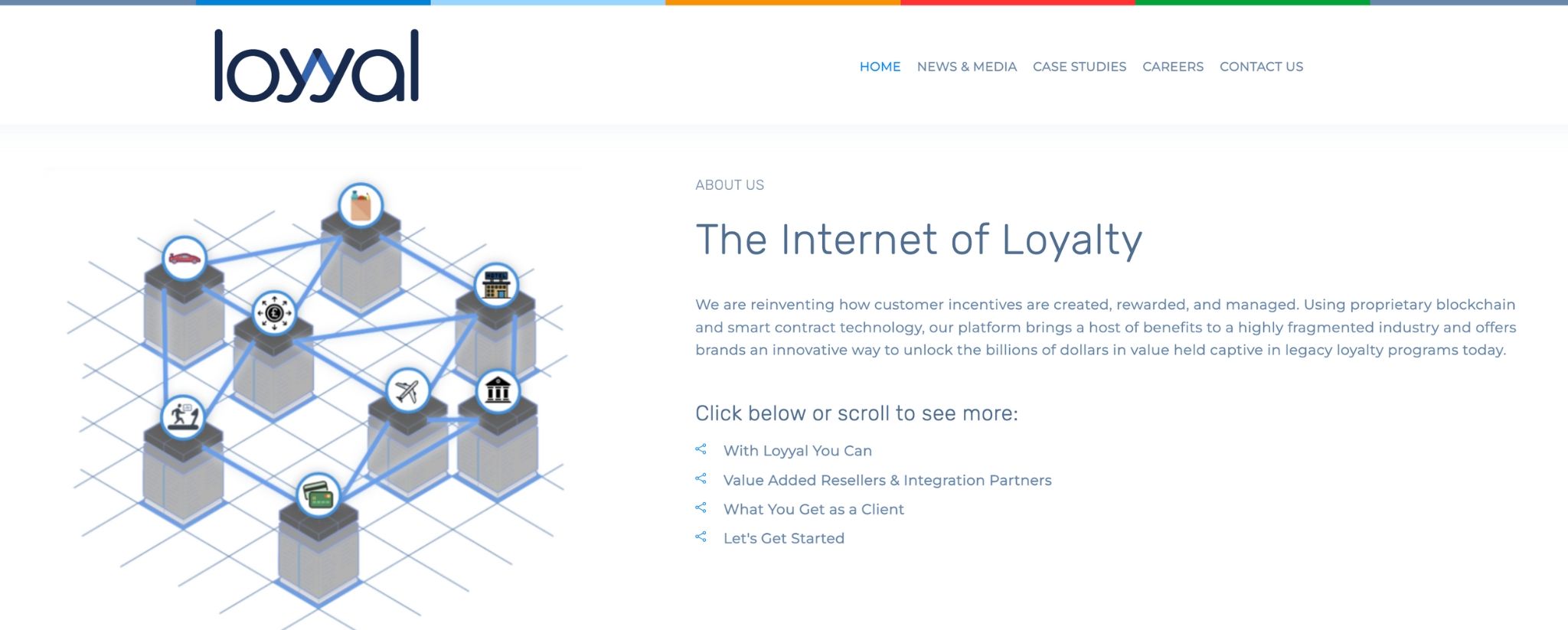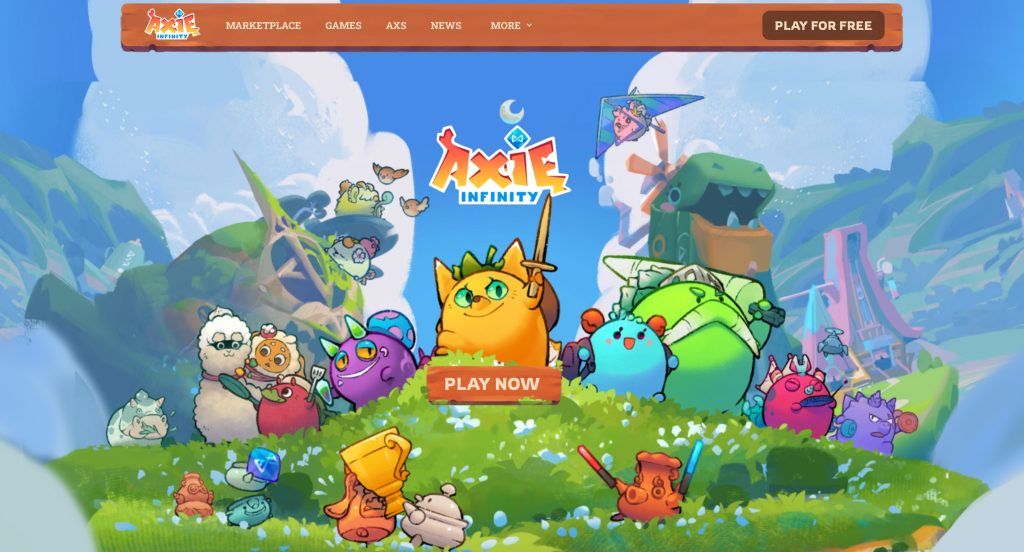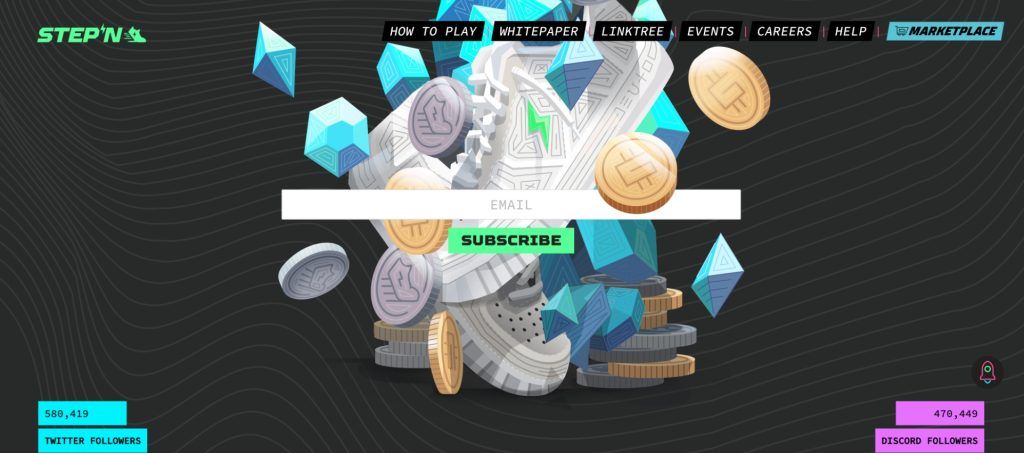9 Best Web3 Business Ideas for Future Entrepreneurs
Updated May 30, 2024
Published June 7, 2023

Web3 marks the next big leap in the development of the internet, sparking a lot of discussion and interest around web3 business ideas. This internet evolution is decentralized and powered by a technology called the blockchain, supporting interactions that are more direct and peer-to-peer. Web3 offers potential enhancements to the user experience by allowing users to have more control over their data and digital assets.
With projections suggesting the web3 market will surge to an incredible $81.5 billion in the next decade, web3 business ideas offer vast monetization opportunities. This article explores some of the most promising web3 business ideas that startups and entrepreneurs should consider in 2023.
1. Decentralized Finance (DeFi)
One of the most prominent web3 business ideas is in the realm of Decentralized Finance (DeFi). Web3 technology has made a significant impact on the finance industry. The value proposition for DeFi-powered solutions revolves around trustless and transparent systems. This option is most attractive for those seeking borderless financial systems — free of intermediaries, central governing, and sometimes ridiculous processing requirements and fees.
Decentralized Finance solutions will also provide individuals with a level of ownership that centralized banking couldn’t afford. The SVB and Silvergate debacles were a painful reminder that the security of funds held in the custody of banks and enterprises was at the discretion of its operators. DeFi applications put the money back in the custody of its users, as conveyed in the famous “not your keys, not your coins” expression.
While decentralized lending, staking, yield farming, and web3 exchanges are popular DeFi applications, these sectors are fiercely competitive, with several big players already slugging it out at the top. To succeed in the DeFi industry, one must explore unconventional ideas and identify unique opportunities in less crowded areas where innovative solutions and products are in demand.
Take Loyyal, a startup using smart contracts to consolidate fragmented loyalty rewards and redemption systems. Earlier attempts at cashback reward programs were usually inefficient, expensive, and not worth the hassle. The underlying blockchain technology of Loyyal’s solution simplifies reward conversions, allowing users to redeem loyalty points across various industries.

Then there’s Flexa, which offers a middle-ground between companies that want to accept cryptocurrency payments without the risk and cryptocurrency holders who simply refuse to hold fiat. At a point of sale, Flexa will instantly convert the user’s preloaded cryptocurrency into fiat and settle the retailer in USD.
2. Web3 Domain Reselling
Reselling web3 domains is an excellent business venture for entrepreneurs who are just starting out. It doesn’t require a considerable investment but can still generate meaningful profits. In contrast to web2 domains that rely on the global network of Domain Name System (DNS) servers, web3 domains are decentralized and can even be stored inside crypto wallets. Most importantly, they can interact with blockchain apps and smart contracts.
The more important a name is to a person or business, the more it’s worth to them, and the more money they are willing to part with; the basis of domain name reselling. An example is carinsurance.com, which was sold for an astonishing $50 million. There are 350 million registered Web2 domains, and domain name sales in the US alone have exceeded $8 billion. So clearly, domain flipping is profitable, and web3 doesn’t miss out on the action. The ENS domain, paradigm.eth, sold for 420 eth in October 2021 — worth about $1.5 million at the time.
From his survey on web3 domain sales, Matt Garcia points out that the best web3 domains comprise:
- Characters between 2 and 8
- Single words in the singular form
- Nouns and emojis
You can buy and sell web3 domains on Marketplaces like Unstoppable Domains, Opensea, and Quik.
3. Play-To-Earn Games
Historically, the gaming sector has showcased a distinct dynamic, with the lion’s share of financial gain going to game creators and owners. This left players continually shelling out to fully enjoy their gaming experience or advance within a game. However, this model is being flipped on its head with the advent of web3.
Within the emerging realm of web3 business ideas, the gaming industry is undergoing a revolutionary shift toward a new approach, known as play-to-earn games. This model empowers gamers to earn rewards merely by participating in the game, accruing digital assets and tokenized in-game currencies.

The concept of play-to-earn isn’t brand new, it has been a part of online role-playing games for some time. What sets apart web3 play-to-earn games is the implementation of blockchain technology. This technology provides enhanced security, safeguarding against hacking, exploitation, and duplication of in-game items. This added layer of protection facilitates a fairer, balanced gaming environment, making it an innovative entrant to the range of web3 business ideas.
DappRadar’s recent report indicates that more than half (52%) of all blockchain activities are connected to blockchain gaming. This illustrates the significant role that gaming is playing in the web3 space.
Following a monumental surge of over 2000% in a year since 2021, it’s clear that blockchain gaming is rapidly carving out a significant niche within the sphere of web3 business ideas. Over a third of gamers admit to playing for additional income. This earning and rewards incentive system offers a compelling value proposition for both players and creators.
Further enhancing this value proposition, play-to-earn games feature digital assets like gear, weapons, and clothing for in-game characters. These assets are Non-Fungible Tokens (NFTs), giving players full ownership. Players can freely trade or swap these items, leading to the creation of a thriving secondary market in the real world. The emergence and success of play-to-earn games thus underscore the vast potential and exciting future of web3 business ideas in the gaming industry.
4. Cryptocurrency Mining
Cryptocurrency mining has emerged as one of the most viable web3 business ideas, primarily due to the unique possibilities brought about by web3 technology. This advancement allows for the creation and free distribution of new forms of digital currency, contrasting significantly with fiat money that central banks or similar organizations control.

As a trustless system, blockchain networks like Bitcoin rely on several verified miners or validators — nodes running their algorithm — to validate cryptocurrency transactions and add them to a distributed ledger.
The strength and reliability of a network increase with the number of miners. Miners, who dedicate computing power to processing transactions and securing the network, receive rewards as an incentive for their contribution. This holds for any cryptocurrency network, with slight requirements variations and participant responsibility depending on the coin’s tokenomics (Proof of Work, Proof of Stake, etc.)
Before diving into crypto mining, you need to determine the mining or validator requirements of the coin and what equipment would serve best. CPU mining was used in the past but has been broadly replaced by GPUs and now specialized ASIC mining rigs. Keep in mind, though, that mining difficulty increases with time, and rewards get scarcer.
That’s not to say mining isn’t lucrative enough; you probably want to DYOR first — and thoroughly — before bankrolling an entire mining rig farm. Alternatively, you may consider starting with more modest equipment and joining a mining pool for increased chances of profits and shared rewards. Or you could opt in for cloud mining and leverage the power of dedicated facilities without risking your equipment becoming obsolete.
Finally, you want to ensure mining activities aren’t prohibited in your country and that you follow the energy and operational conditions stipulated in others.
5. Decentralized Cloud Storage
The blockchain addresses some of the most prevailing issues conventional cloud storage services face. Vulnerabilities, breaches, censorship, server outages, and possible data loss or takedowns are to mention a few.
Decentralized cloud storage works by utilizing peer-to-peer (P2P) technology, which places the responsibility of data storage and retrieval on individual network participants’ computers (called nodes). Data is broken into fragments redundantly stored across multiple nodes of a network.
A decentralized storage solution would be more resilient than current cloud solutions and robust enough to support decentralized applications (dApps) running on a blockchain. Blockchain technology offers a high level of data security, thanks to its unchangeable character. This makes it extremely challenging for malicious actors to tamper with the stored information, hinting at a future where privacy worries could be less prevalent.
However, early attempts at creating cloud solutions using blockchain technology have encountered difficulties in ensuring seamless interoperability and scalability. Currently, startups are racing to overcome these challenges and cause significant disruption in the cloud storage industry.
At the forefront of the race includes Filecoin, whose Proof of Storage algorithm introduces an incentive system that rewards network participants (miners) for providing storage and retrieval capacity to their blockchain network. Simply, they distribute copies of client data across their network, with each node required to present cryptographic proof of file integrity at any given moment.

6. Web3-Based Content
The internet is a HUGE place with an incredible amount of information contained within. Blogs, forums, and video channels create content that answers the billions of search queries that run through search engines daily.
Over half of the respondents in a US-based survey had never heard the term “web3” before. Even with a rate of adoption higher than the coming of the internet, web3 is still a relatively new concept. As more people embrace and adopt its technologies, the demand for information will inevitably increase, presenting a host of web3 business ideas for content creation. Web3 can indeed be a confusing industry for many, creating a need for digestible, user-friendly content.
It might take a while for your blog, newsletter, podcast, or YouTube channel to start generating traffic and revenue, but once set up, educational and informative content can fetch passive income in the long run — especially for a growing industry. In the meantime, establishing yourself as a credible source in the industry means you will be approached for promotions, endorsements, or collaborations, as projects try to get themselves in front of your growing, loyal audience.
It goes without saying; you’ll need to master what you teach. As with any emerging technology, Web3 brings along a learning curve. The rapidly changing trends within the sector may necessitate unlearning old methods and acquiring new knowledge.
7. Non-Fungible Tokens (NFTs)
Non-Fungible Tokens (NFTs) represent one of the most captivating web3 business ideas in the digital space. Built on a blockchain, NFTs are unique digital assets that cannot be duplicated, making them an invaluable tool in today’s online world.
These NFTs could be digital assets such as media files or symbolize physical items like real estate. Thus far, the primary focus of NFTs has been on art, property rights, and digital media due to their compatibility with the primary use case of incontestable ownership, easy encoding, and value transfer.
In a high-profile example from 2021, a digital collage by the artist Beeple was sold as an NFT for a staggering $69 million. This record-setting sale has sparked a flurry of similar high-value transactions in the NFT space. For established artists like Beeple, non-fungible tokens offer an exciting new avenue to market their work. However, it’s not just creatives who can benefit from NFTs; even non-artists have launched successful NFT collections by employing a solid marketing strategy.
Apart from trading NFTs, various business applications exist in this field, including marketplaces, NFT minting & staking platforms, and monitoring tools. These innovative web3 business ideas are contributing to the rapid evolution of the digital marketplace.
NFTs also have the potential to streamline investments. As an example, Ernst & Young’s partnership with WiV technology demonstrates this aptly. The wine investment company uses NFTs to certify a wine’s origin, quality, and value, minting these details on a blockchain.
Want to learn more about the real-world applications of NFTs? Check out Utility NFTs: Real-World Use Cases and 5 Best Ideas. It’s a comprehensive guide that delves into the practical uses of NFTs and offers fresh perspectives on how these unique digital assets can revolutionize various sectors.

8. Web3 Lifestyle Applications
A new trend of emerging web3 business ideas encourages users to adopt healthier lifestyles. You most likely would have heard some of them; move-to-earn, sleep-to-earn, etc. It would seem other industries are trying to replicate the success of the play-to-earn model that took the gaming world by storm.
Like play-to-earn models, web3 lifestyle applications create an incentive (money, in most cases) to engage users, leading to shared value for creators and users alike.
STEPN, a company leading the move-to-earn charge, launched a Solana-based application that rewards a user’s body movements like walking, running, or jogging with its native token, GMT. Sweatcoin was another move-to-earn application that made waves with over 100 million users, with the current market cap of its token at $40 million.

The success of a lifestyle application seems heavily dependent on the hype it gets and the rewards it offers. Anyone looking to build a business out of one should look towards a solid marketing strategy and an irresistible incentive system.
9. Web3 Marketing Agency
Given the boom of innovative products and projects in the web3 space, there’s a significant demand for targeted marketing. Hence, a web3 marketing agency stands out as a viable web3 business idea.

The evolution of marketing mirrors that of the internet, transitioning from its rudimentary stages to increasingly advanced tactics. From the birth of digital advertising back in the ’90s to today’s social media era, businesses have been at the forefront of leveraging new engagement methods. But the era of a few big fish controlling the web, intermediaries muddling the waters, and our digital lives glued to screens had its downsides. Thankfully, web3 fixes those — think more transparency, less fraud, and no more data dictatorships.
Rather than playing a game of views and treating users like targets, web3 marketing is about delivering the right message and experiences. It’s a trust revival, giving users control of their data and marketers a chance to offer real value. In short, it’s an excellent time to be in the marketing industry.
Web3 marketing agencies must develop unique processes and tools to advertise products and services over the physical and metaverse worlds. These agencies must stay ahead of industry developments to keep their clients ahead of the curve. This business idea is not capital-intensive either. With just a few dedicated members continuously innovating around the latest technologies, even small agencies can bootstrap their way to success in the web3 industry.
How Will Web 3.0 Businesses Work?
Web 3.0, also known as the decentralized web, will operate based on its development stack, which consists of various segments working together to support its functionality. The fundamental components of the web3 stack are as follows:
- Metaverse: The metaverse plays a pivotal role in many Web3 business ideas. It aims to blend the real and digital worlds, creating a seamless connection between the two. Tech companies are actively working on developing immersive technologies like virtual & augmented reality devices to bring about a genuinely immersive and interconnected space.
- NFTs/Digital Assets: Non-fungible tokens (NFTs) and other digital assets are crucial in Web 3.0. NFTs enable the tokenization of digital assets, making them unique and verifiable on the blockchain. NFTs, special digital items, empower creators to better manage their work. They offer creators a way to benefit directly from their work, reducing their reliance on middlemen.
- DAOs: Decentralized Autonomous Organizations (DAOs) offer a fresh approach to decision-making by utilizing smart contracts that support a system that is decentralized and flexible. They establish standardized protocols for transactions and exchanges, and token holders typically have voting rights within the organization. DAOs are considered an influential layer of the web3 stack, empowering community-driven decision-making and collaboration.
- DApps: Decentralized Applications (DApps) are autonomous applications that operate on the blockchain. These applications enable businesses to expand their services in the Web 3.0 ecosystem, providing services to the virtual and physical worlds.
- Tokenization and Crypto: Cryptocurrencies and tokenization are central to Web 3.0 and many web3 business ideas by facilitating business transactions and implementing innovative ideas. Cryptocurrencies enable secure and efficient financial transactions within the decentralized web. Tokenization allows businesses to represent assets or services digitally, making them easily tradable and divisible.
- Blockchain: Blockchain technology forms the underlying infrastructure for Web 3.0. It provides decentralized access and maintains the integrity and security of the network. Blockchain ensures transparency, immutability, and trust within the web3 ecosystem, enabling secure interactions and verifiable transactions among participants.
Final Thoughts
Web3 may still be in its infancy, but it’s growing at an ever-increasing rate year-on-year, with no signs of stopping. The technologies and key advantages web3 brings have already given rise to several multi-billion dollar companies, and there’s still plenty more room for yours.
For entrepreneurs who want to grab a piece of the pie, now is the time to start experimenting with the technologies — or at least develop a basic understanding of them. Web3 will inevitably impact businesses’ future, and understanding its potential and shortcomings will allow entrepreneurs to identify unexplored business models, explore new revenue streams, and create unique value propositions.
Akin to the coming of the internet, those who position themselves at the forefront of web3 will have gained a competitive edge in their respective industries by the time the rest of the world catches up.
Share This Post
Ada Rivers
Ada Rivers is a senior writer and marketer with a Master’s in Global Marketing. She enjoys helping businesses reach their audience. In her free time, she likes hiking, cooking, and practicing yoga.
Allow cookies
This website uses cookies to enhance the user experience and for essential analytics purposes. By continuing to use the site, you agree to our use of cookies.
